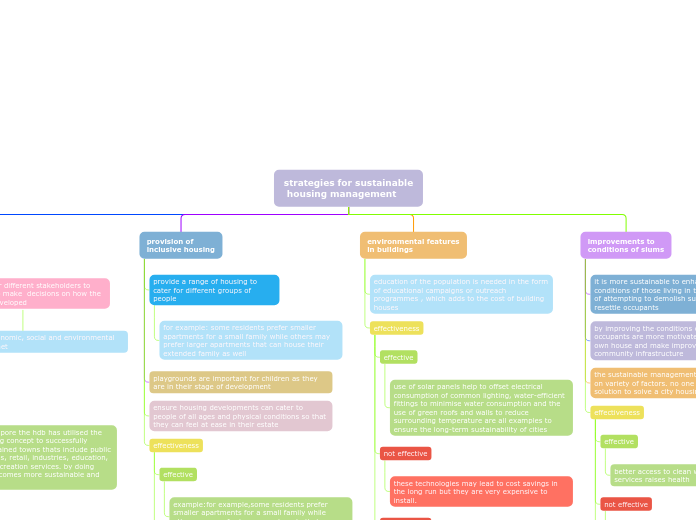von chloe kit Vor 3 Jahren
278
strategies for sustainable housing management

von chloe kit Vor 3 Jahren
278

Mehr dazu
social impact of improvements to slum conditions remains questionable, as crime rates, unemployment and the stigmatisation of those living in such circumstances still remain
although these schemes improve the quality of life of the occupants, they often run contrary to long term-city development plans since these informal housing settlements are built on plots of land not intended for housing use.
better access to clean water and sanitation services raises health
people may not understand the benefit of these and thus may be perceived as inconvenient for example, residents who do not understand the benefits of recycling might also find it troublesome to sort their trach before disposing it into the recycling bins
these technologies may lead to cost savings in the long run but they are very expensive to install.
use of solar panels help to offset electrical consumption of common lighting, water-efficient fittings to minimise water consumption and the use of green roofs and walls to reduce surrounding temperature are all examples to ensure the long-term sustainability of cities
example: making public housing is costly as costs is needed to provide access to disadvantaged groups or groups with special needs. also catering for a variety of housing types means that more time and effort is needed
example:for example,some residents prefer smaller apartments for a small family while others may prefer larger apartments that can house their extended family as well
example:is that it requires the coordination of many stakeholders, which is difficult to do in some countries where many different groups have many competing perspectives.
example: in singapore the hdb has utilised the new town planning concept to successfully develop self-contained towns thats include public housing, amenities, retail, industries, education, healthcare and recreation services. by doing that, the town becomes more sustainable and liveable